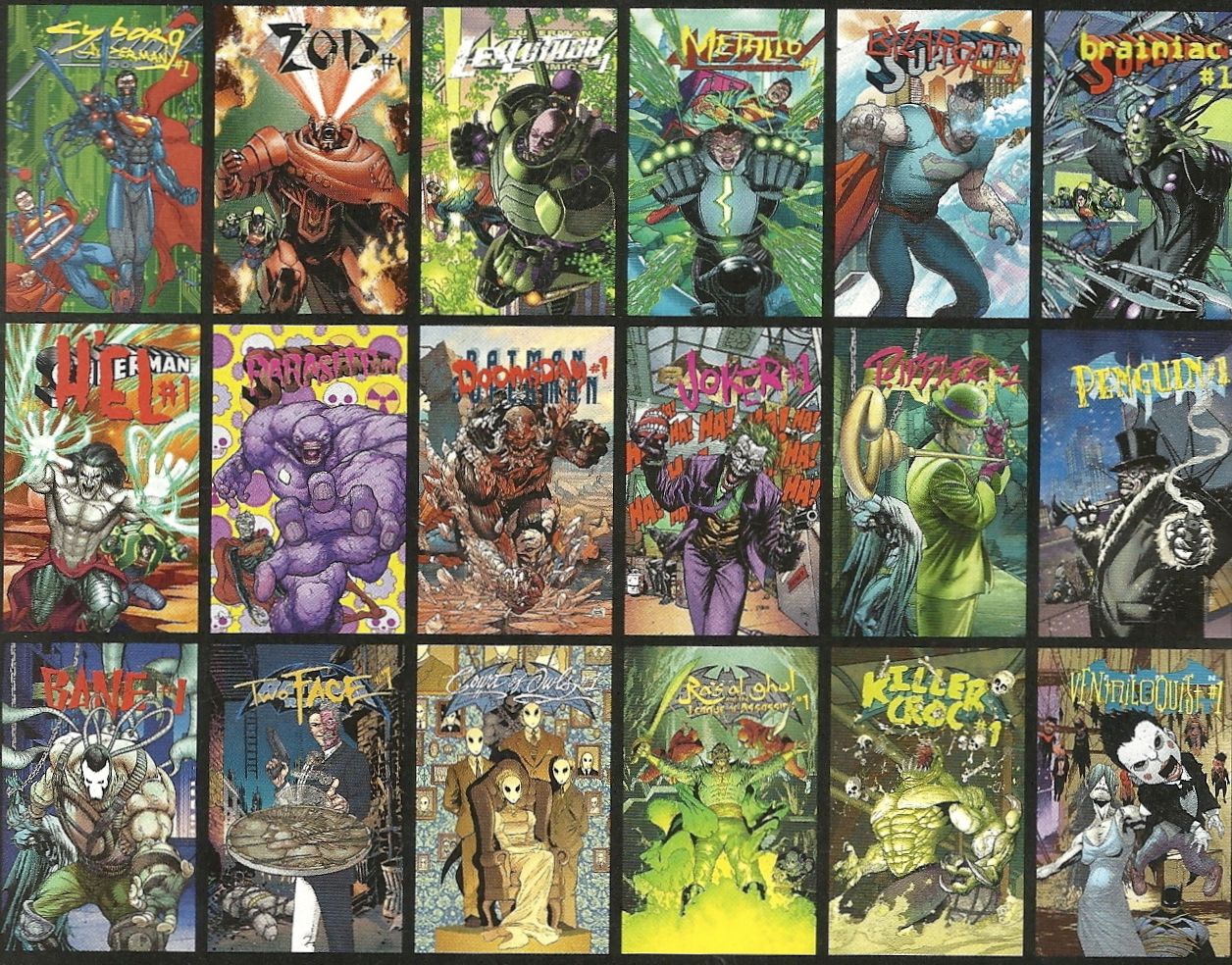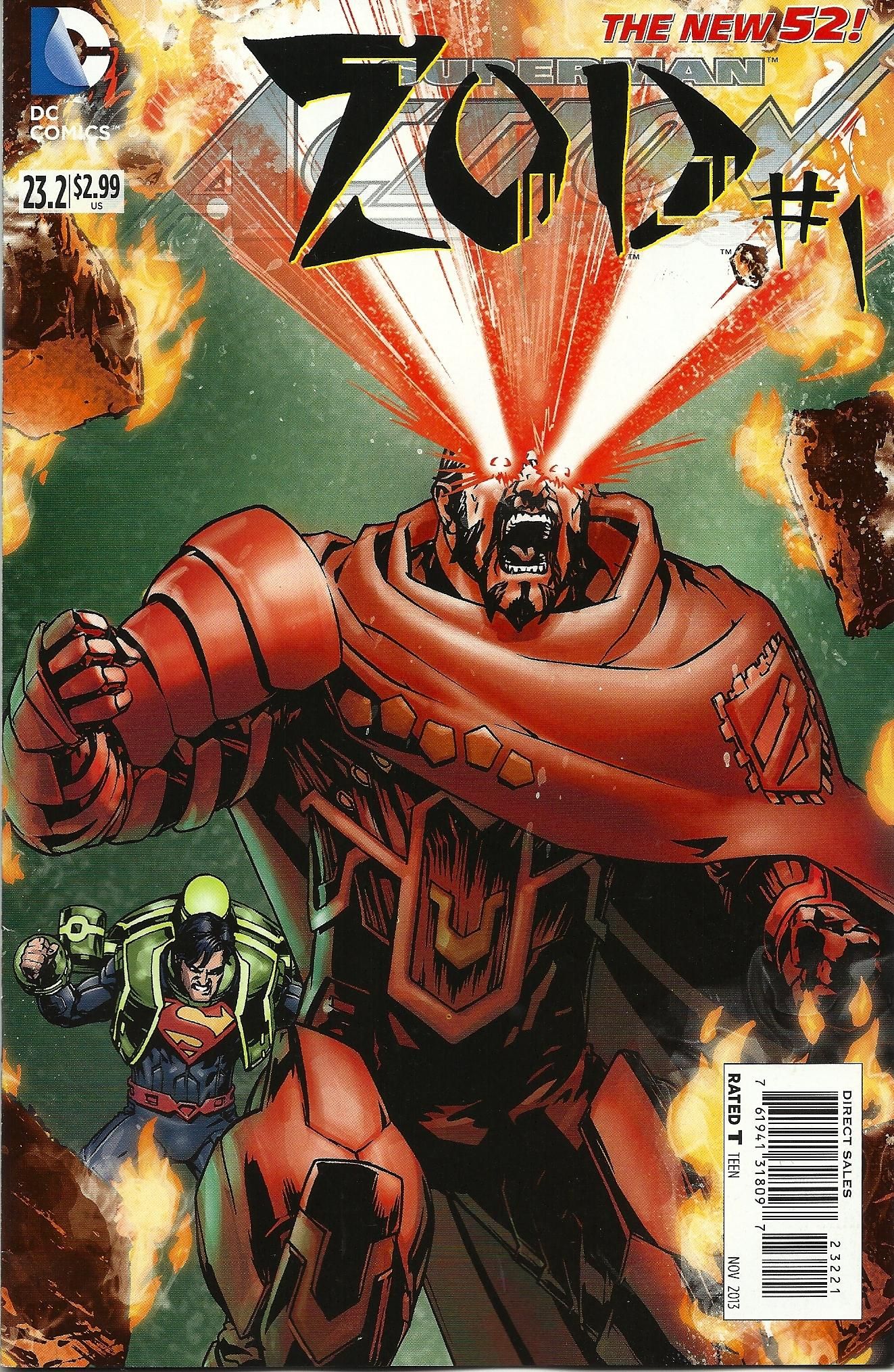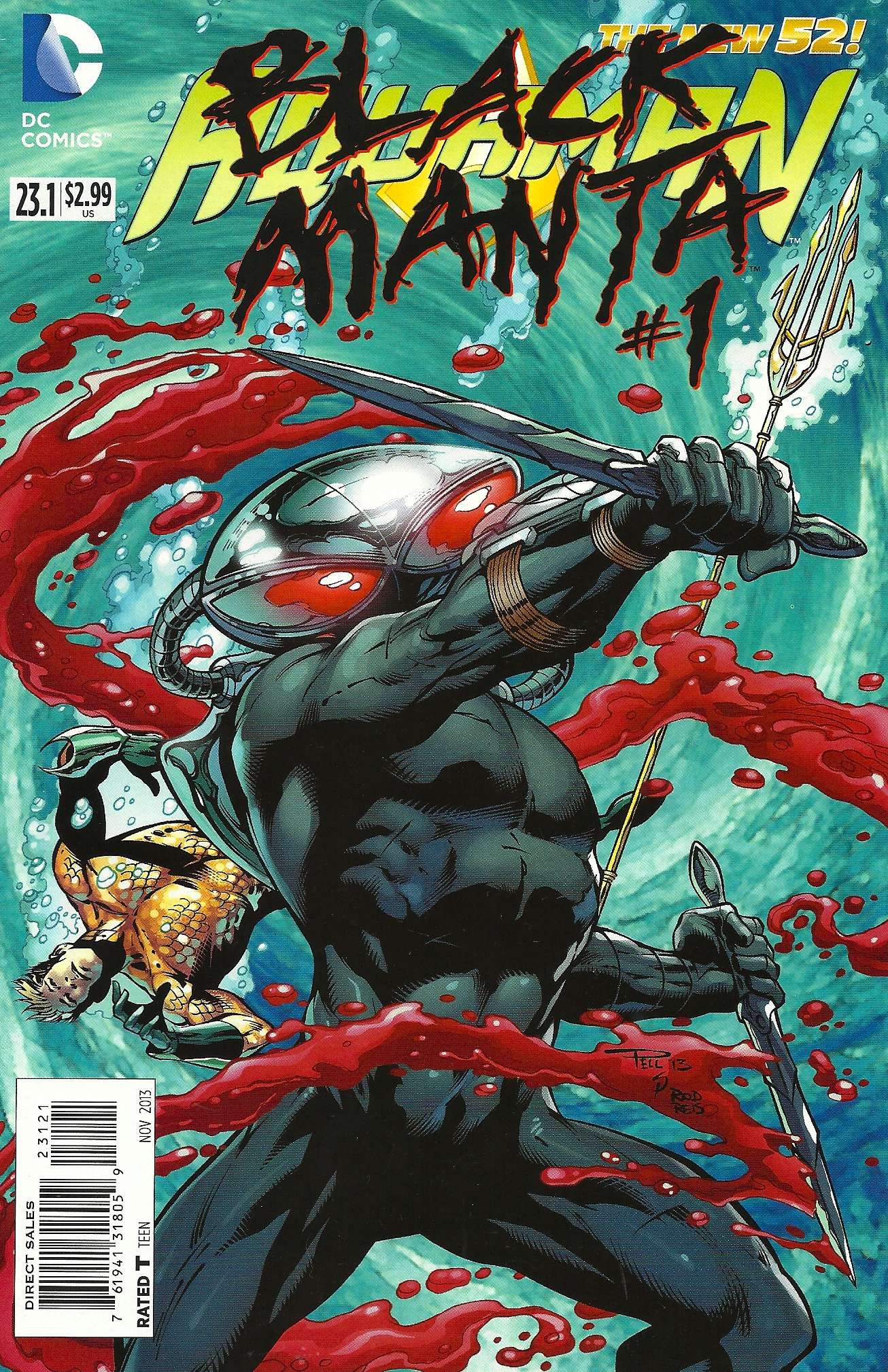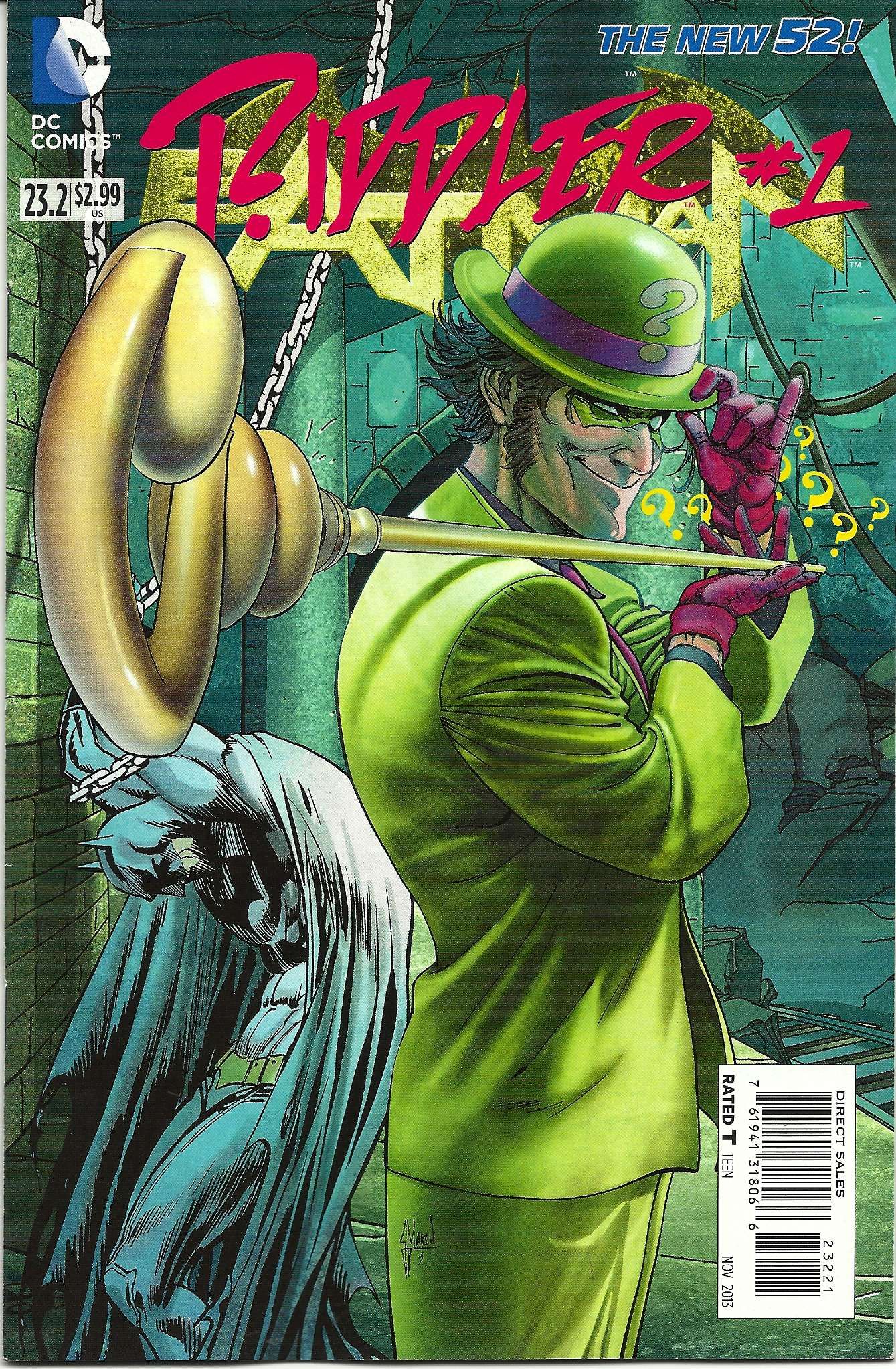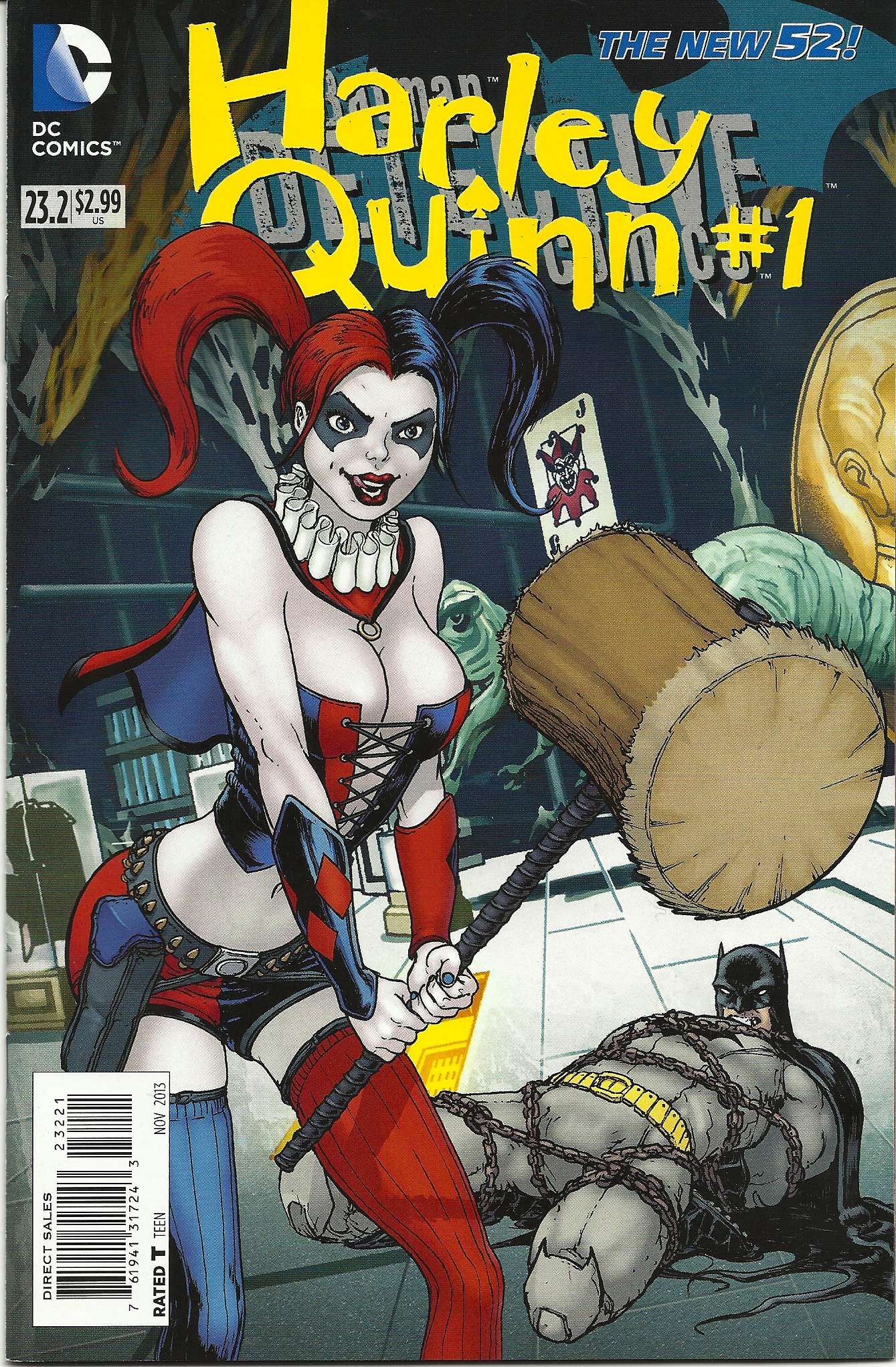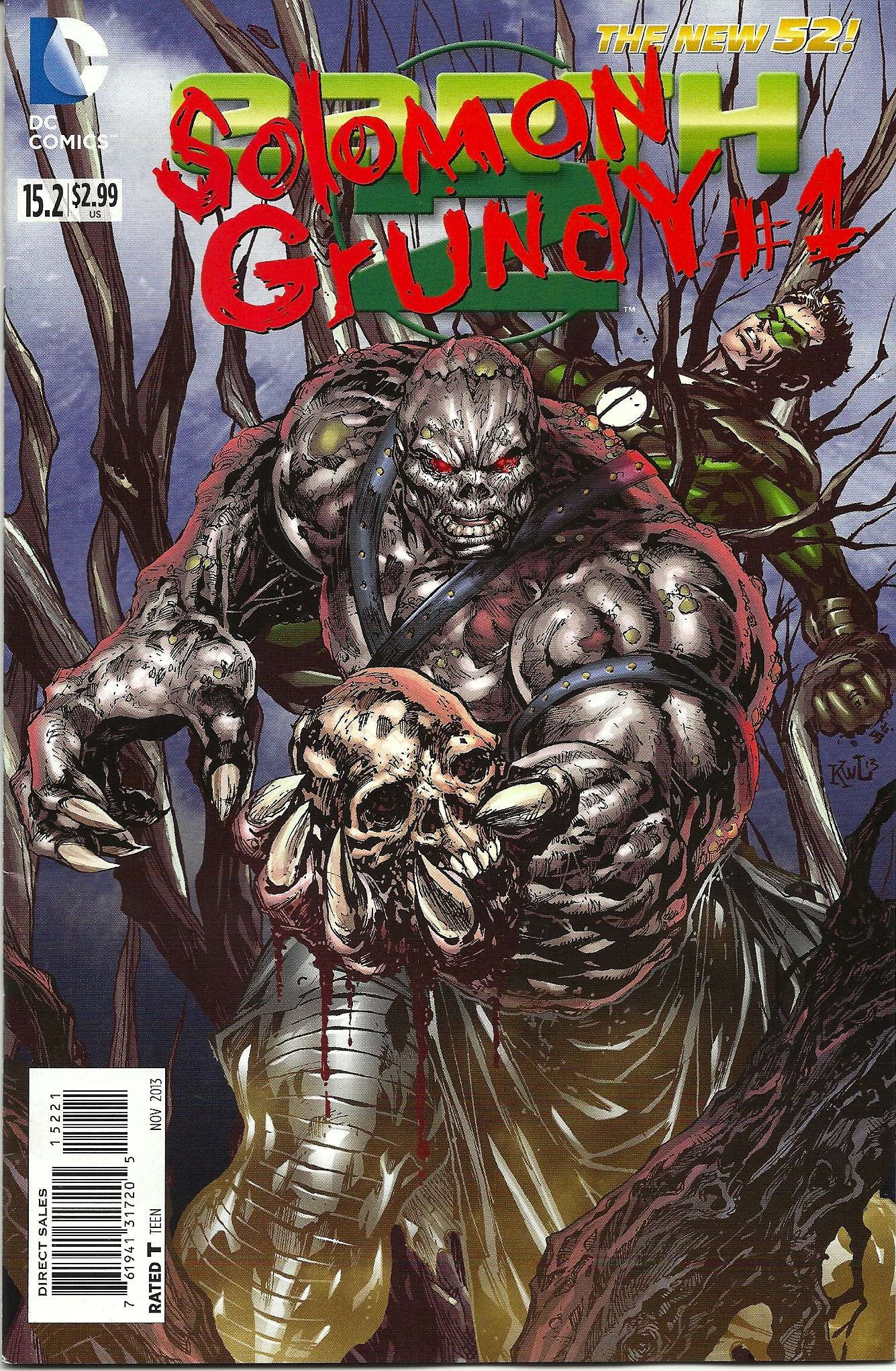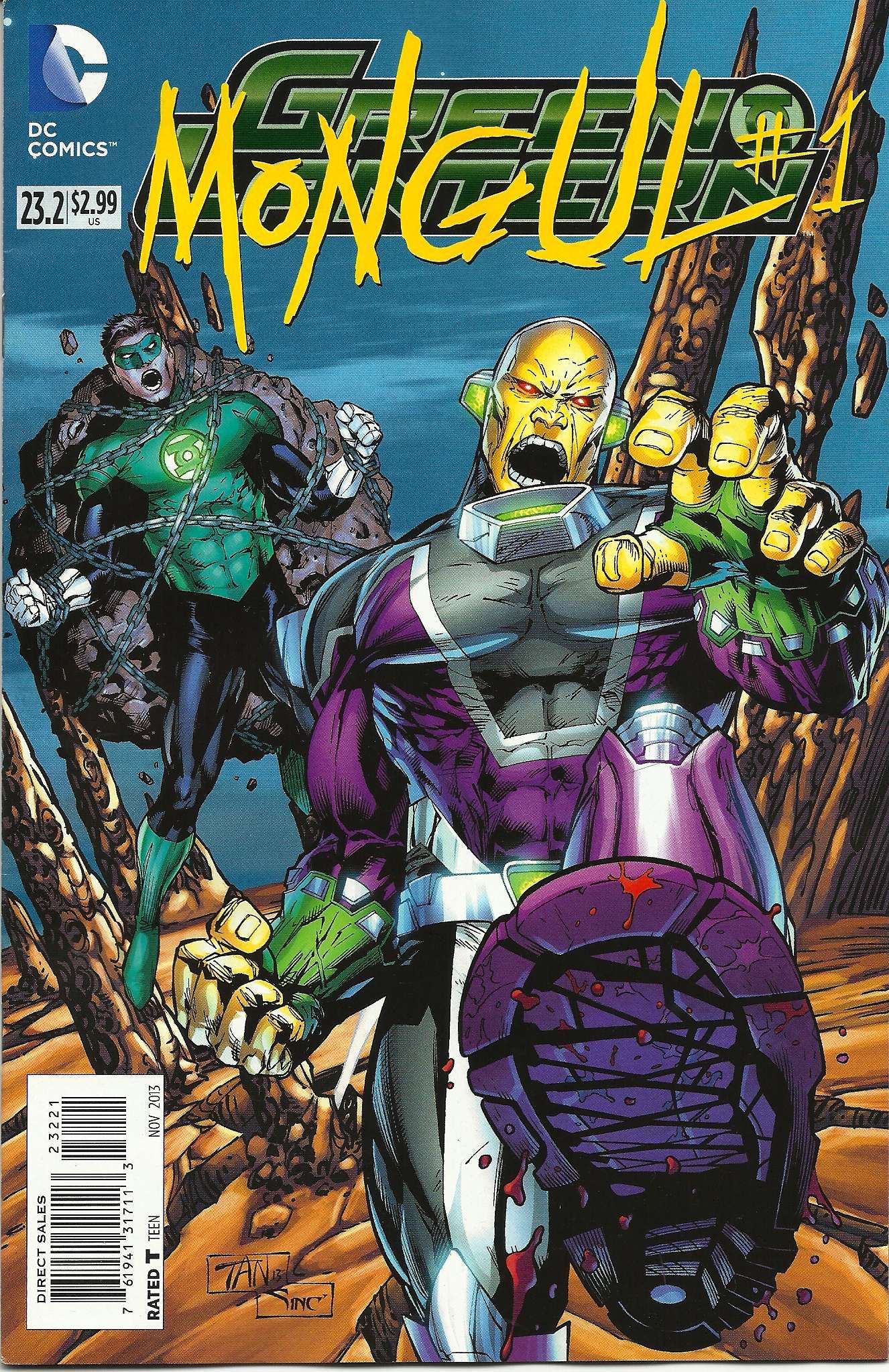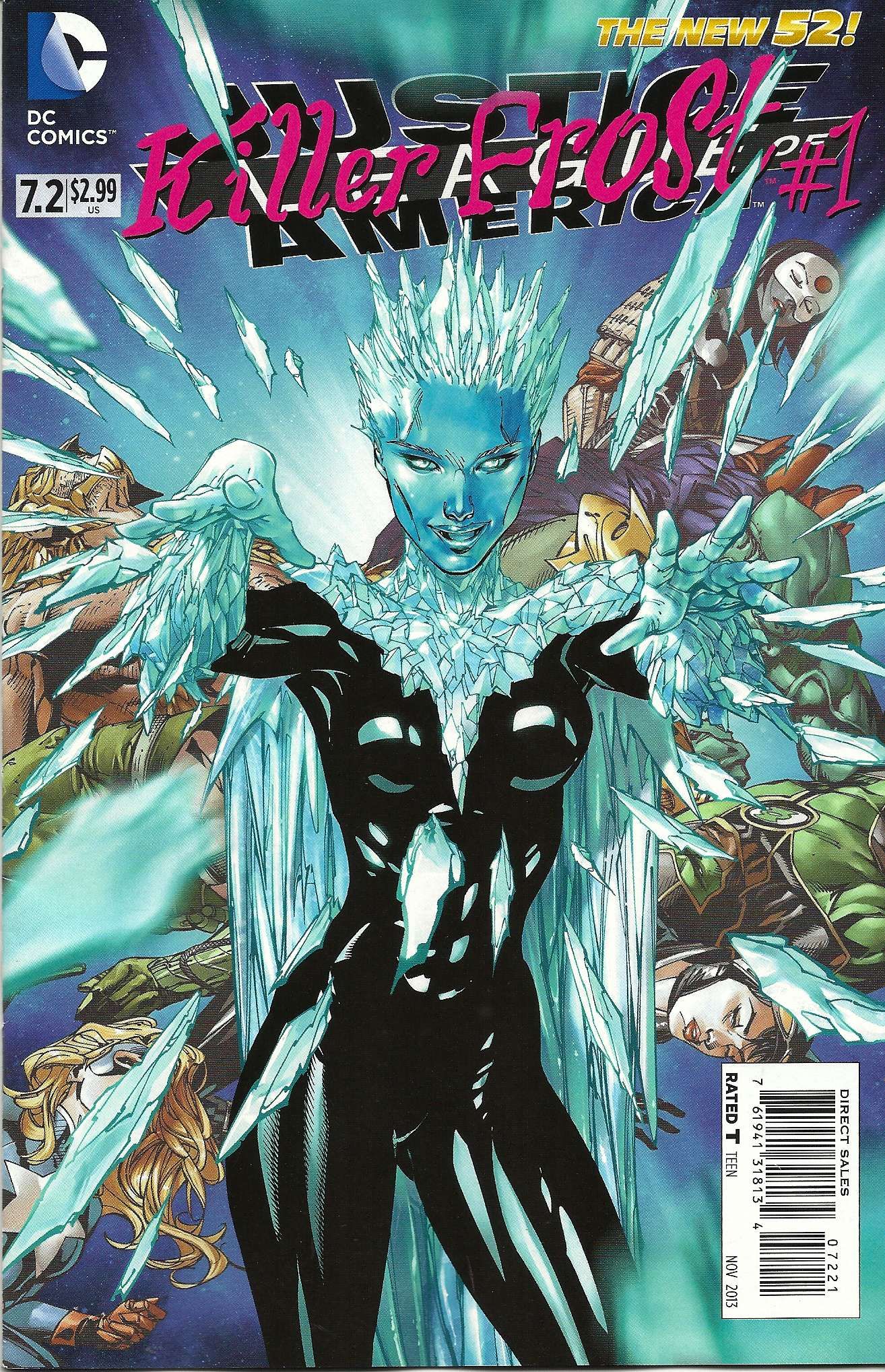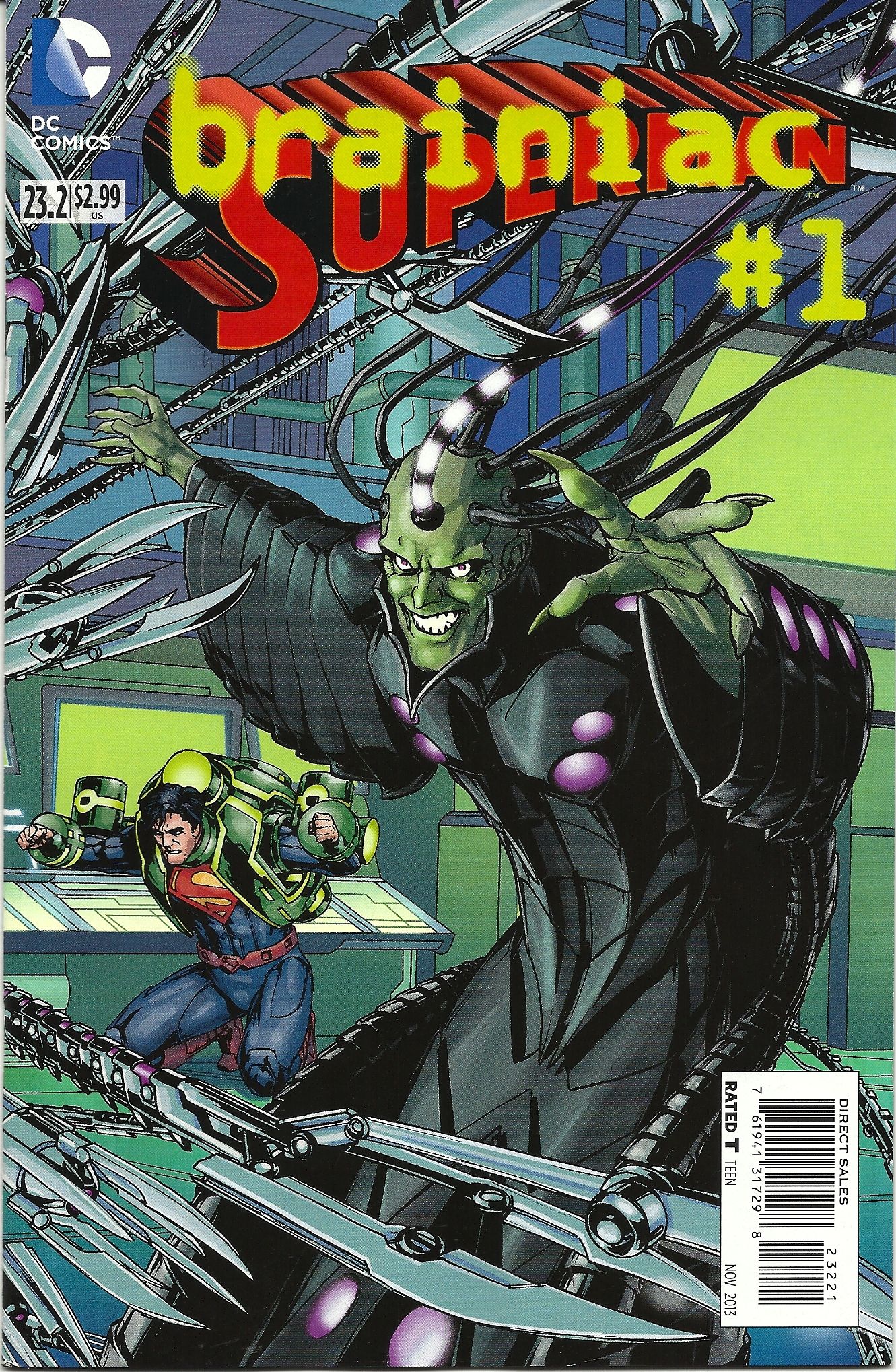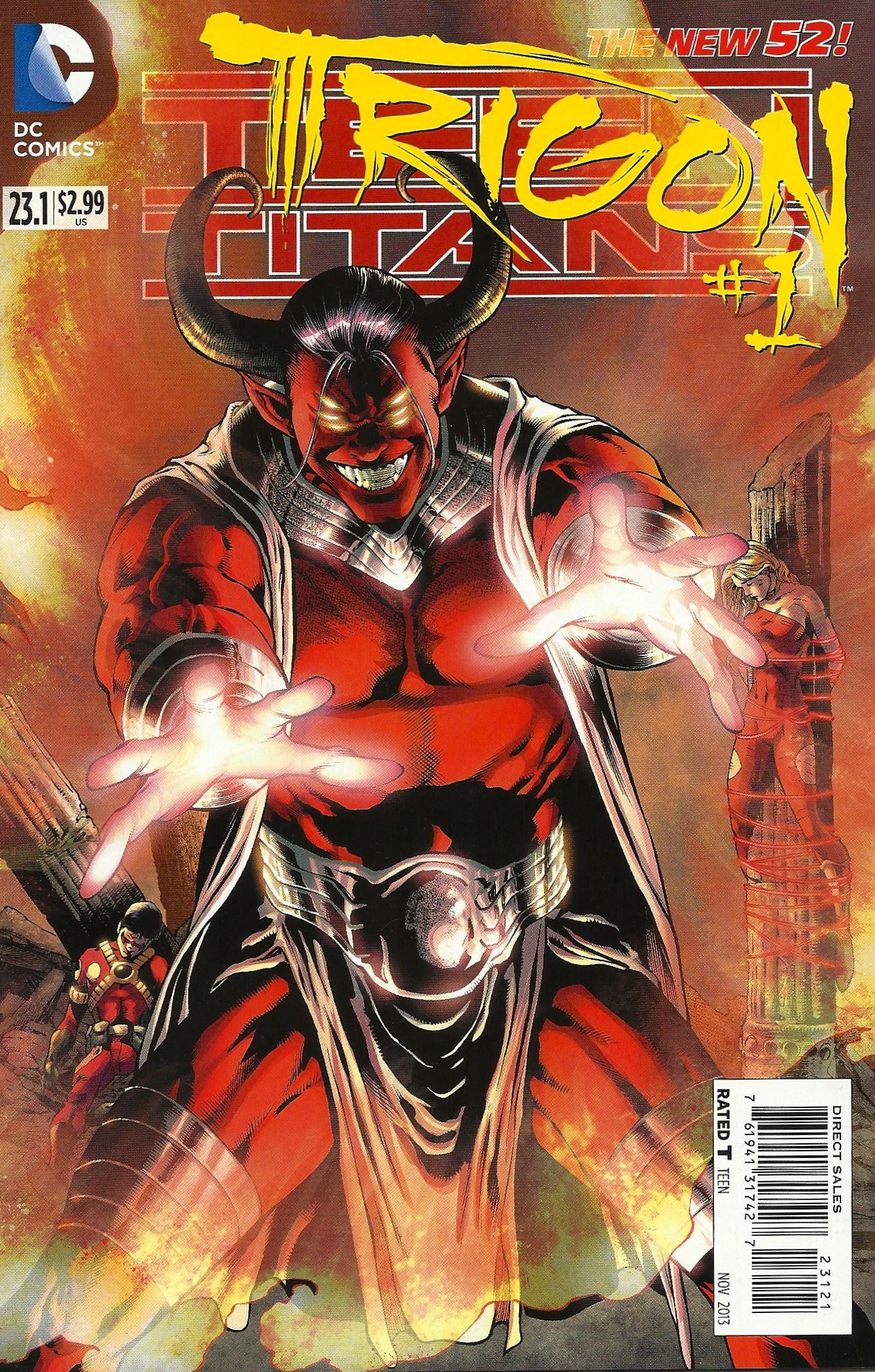DC Comics kicked off its Villains Month last week, as the evil opposites of the Justice League invaded the DC Universe, seemingly disposing of all the heroes and taking over the world.
Likewise, the villains have been taking over DC's New 52 line of comic books, with the MIA heroes finding the covers of their books occupied by bad guys. Those are, of course, the collectible and somewhat-controversial (among retailers) 3D lenticular covers.
But as the case with books, we shouldn't judge a comic by its cover, so let's continue reviewing our way through the contents of the Villains Month issues. As with last week's batch, I'm rating each book on a 10-point scale of how evil it is, with "Not Very Good" being the worst and "Absolute Evil" the best, and noting its connectivity to the Forever Evil crossover event that sparked the promotion in the first place.
Action Comics #23.2: Zod
Written by Greg Pak
Drawn by Ken Lashley
Possibly the most-rebooted and reimagined villain in Superman's impressive if under-valued rogues gallery returns in his latest incarnation. Current Batman/Superman writer and latest Action Comics writer Greg Pak has the general tell us his own life story here, beginning with his boyhood fascination with monsters, the death of his parents and his feral, Green Arrow-like origin story all the way through his complicated relationship with the Brothers El, his specific crimes to justify Phantom Zoning in this version and his promise to come back and make life miserable for Superman.
All that's missing is a riff on the kneeling line from Superman II, which most writers touching the character seem unable to resist riffing on (so congratulations to Pak on that score, who has a stronger will than most).
Lashley's art is inky and full of extraneous lines (i.e. in DC's current, Jim Lee-inspired house style), and the designs are hardly the most appealing, but if the characters look silly in a very dated, very '90s way, that's hardly on Lashley — Krypton seems to be redesigned even more often than Zod, and one supposes the fashion of the planet in the New 52 was previously determined elsewhere.
This Krypton is neither the everyone-dresses-a-lot-like-Superman Krypton of the Silver Age, nor the cold, sterile space fantasy of the John Byrne years, but a garish collection of pointy edges and extraneous metal bits and pieces. Regardless of the look, the book functions pretty much exactly as you might expect: It's a rather thorough origin story of the villain whose name is on the front cover, with a nod toward a future storyline in which he bedevils our hero Superman, seen in a single panel from within the Phantom Zone.
Rating: Morally Deficient.
Connectivity: None.
Aquaman #23.1: Black Manta
Written by Tony Bedard and Geoff Johns
Drawn by Claude St. Aubin
Perhaps owing to the involvement of Forever Evil's writer Geoff Johns, this issue is one of the most directly connected to that event to date. In fact, for the most part it tells the same events of the first issue of the series, only as seen from the point of view of Black Manta, who obviously missed certain portions of the story.
So we open in Belle Reeve prison, with skinny Amanda Waller trying to recruit Manta for Suicide Squad while recapping his origin story, when unseen villains (Power Ring and Deathstorm) release all of the inmates, sparking a riot.
We follow Manta as he's given a Society membership coin by an especially badly drawn New 52 King Shark (that character looks completely different every time a new artist draws him, I swear), wanders out of the prison, attends the mass meeting in Happy Harbor and decides whether to throw in with the Crime Syndicate or not (he chooses not, party because they've stripped meaning from his life by killing Aquaman, and partly because Ultraman's little stunt with the moon inadvertently screws up the tides and desecrates his father's grave).
And if the events of the story didn't make it clear enough, the books ends with the tag "Black Manta's War Against the Crime Syndicate Unfolds in Forever Evil." It looks like, as with the case with Lex Luthor, plenty of DC's bigger villains will be attempting to fight off the Crime Syndicate invasion, making at least the early portions of Forever Evil a Bad Guys Vs. Worse Guys, or Evil Vs. Eviler conflict, rather than the more traditional Good Vs. Evil set-up of superhero comics. We'll see.
Aside from his weird-looking King Shark, who appears like a Great White with crustacean-like eye stalks growing out of his head, St. Aubin does a fine job on all of the art, greatly reducing the fan-casting portrayal of Manta as LL Cool J that Ivan Reis had engaged in, and rendering some of the very same scenes that David Finch drew in Forever Evil only in his own smoother, cleaner style.
I kinda wish the book came with a character key, though, as I really want to know who the guy is in the blue suit that Manta gives a dirty look to when he declares, "Y'hear that, Manta? Aquaman's dead!"
Rating: Wicked.
Connectivity: High (In fact, the highest thus far).
Batman #23.1: The Riddler
Written by Ray Fawkes and Scott Snyder
Drawn by Jeremy Haun
With this issue, regular Batman writer Sndyer co-plots a story scripted by Fawkes and drawn by your next Batwoman artist. It functions as a nice, thorough introduction to the personality, skills, schtick, quirks and threat-level posed by the Riddler (a character who has ranged from silly and semi-retired to marginal to tertiary to good guy during the 20 years or so I've been reading Batman comics), and it does all of that while tying into the events of Forever Evil (at least in a more ore less "red skies" kinda way) and calling back to the events of the in-progress Batman storyline "Year Zero."
That's an all-around pretty effective comic book script then, fulfilling more promises than DC even made with its promotion of the issue. I can't remember the last time I read a Riddler comic where the character even seemed like a villain who might be in Robin's league, let alone Batman's.
Haun's artwork is has a refreshing crispness to it, and he does manage to make the Riddler look mildly cool rather than extremely silly (particularly before the character puts on his hat and mask). There were a few panels during key action scenes that were indecipherable, however, and the relative simplicity of the artwork on display here compared to that of J.H. Williams III doesn't bode well for the future of Batwoman.
Rating: Evil.
Connectivity: Low.
Batman and Robin #23.2: Court of Owls
Written by James Tynion IV
Drawn by Jorge Lucas
If you've looked very closely at DC's solicitations for Villains Month, you have no doubt noticed one of the most obvious sales-goosing moves. While the company publishes about 52 monthlies every month, and there were to be 52 villain-starring issues, not every book published in August would have a villain's issue in September. For example, instead of issues of the lower-selling Batman titles like Batgirl, Nightwing and Batwing, DC was instead publishing multiple issues of the higher-selling titles like Batman, Detective and Dark Knight (hence the decimal point numbers).
In some cases, it's obvious the issue in question is actually for a title other than the one that appears on the cover. Here's a pretty perfect example: While technically an issue of Batman and Robin, it's penned by the writer of Talon, stars the villains from Talon, features a character introduced and used somewhat regularly in Talon, and ends with a blurb reading "END? Find out in the pages of Talon."
If you somehow missed the Court of Owls during its year-long conflict with Batman in the pages of Batman, a conflict that spilled out into the pages of almost all of the Bat-Family titles and spun off into Talon, this is a sort of Court 101 story, explaining the nature as a cabal of rich crazy people with spooky masks who have controlled certain aspects of Gotham City from the shadows using fear tactics, convincing the world they don't really exist -- and, when all else fails, assassins in owl costumes.
Between a bunch of flashbacks, a grown-up owl tells a little-girl owl about the Court, and how it's going to respond to the current madness unleashed in Forever Evil: By awakening the first, and apparently most dangerous, Talon.
There are probably some pretty interesting stories to be told regarding the Court in a world ruled by villains, as it would become the de facto protector of Gotham. I'm also sure there's something to be made out of the fact that Batman's evil opposite from Earth-3 is named Owlman and, in at least one version, his secret identity has some stuff in common with at least one member of the Court.
Maybe someone will get to that story somewhere (there's a Forever Evil spinoff miniseries set in Gotham City, after all, and six more issues of the main series to go), but this isn't it.
Rating: Naughty.
Connectivity: Very low.
Batman: The Dark Knight #23.2: Mr. Freeze
Written by Justin Gray and Jimmy Palmiotti
Art by Jason Masters
Perhaps the most superfluous of the villain spotlights (although it has some serious competition in this week's issue of TEC), this book retells the origin story of Mr. Freeze ... which was told at some length just last year in Batman Annual #1. In fact, in this book Gray and Palmiotti even include several scenes from that comic, and Masters redraws panels from it.
There isn't really any change to the origin in the past year (although in the annual, there was a rather significant change that didn't sit well at first, as it's a worse, less-dramatic version of Freeze's story ... but it is a radical difference, and I suppose there's little point in rebooting just to re-do the same stories over and over). Certainly not enough to justify a do-over so soon.
Masters' art is certainly nice enough, particularly in the rather eerie imagery in which a blizzard seems to have infiltrated a family's home, but it's not so different a style of artwork that it transforms Freeze's story in any significant way. As for the tie-in elements to Forever Evil, which presumably conjured this story into existence, it amounts to nothing more than explaining how Freeze got out of Arkham on this occasion.
More so than many of the other 24 of these I've read in the past two weeks, this one seems like it was created just to fill an open slot, and I kept thinking of other villains who might be more deserving of an origin story in Freeze's stead.
Rating: Somewhat disobedient.
Connectivity: Very low (like, barely there).
Detective Comics #23.2: Harley Quinn
Written by Matt Kindt
Drawn by Neil Googe
If you're looking forward to Harley Quinn's upcoming ongoing title, it's worth noting that this is really more of a Suicide Squad story — as the presence of the latest Suicide Squad writer Kindt, a brief appearance by Deadshot and the "continued in Suicide Squad #24" all indicate. And, as with the just-discussed Mr. Freeze special, this comic retells an origin story that was just told last year, in the pages of Suicide Squad.
Kindt does alter that origin a bit, in a way that contradicts the original telling, which, again, is just a year old. He tells the story of where she got her costume and her giant mallet, which is kind of silly — she basically just wanders around finding pieces of clothing she likes on people and then beats them down and takes them, while the mallet was in a pawn shop window — and then weaves the events into Forever Evil (she attends the big meeting, but decides she's not into it).
Rather strikingly, Kindt's Harley Quinn is a much more Joker-like, much more evil character. She kills dozens, if not hundreds, of children in an elaborate scheme involving exploding video games, all in an attempt to fulfill the emptiness she feels, which doesn't seem like a very Harley Quinn-like thing to do, but I guess the New 52 version is that much different than the previous one.
Perhaps the biggest disappointment about the issue, however, is the same one that comes with every super-comic Kindt and his fellow excellent cartoonist Jeff Lemire script: They're just writing these things, not drawing them as well. If ever there was a perfect DC comic for Kindt to draw himself, a one-off starring a crazy lady born in a cartoon would be the place for it. Ah, well.
Googe's art is about as exaggerated and cartoony as art can seemingly get on the current spectrum of DC artwork, which seems mostly appropriate for the character, even if she is herself a lot less cartoony here than in previous incarnations.
Rating: Without scruples.
Connectivity: Low-to-Medium.
Earth 2 #15.2: Solomon Grundy
Written by Matt Kindt
Art by Aaron Lopresti
The quickest read of any of the Villains Month books so far, I think this took me less than three minutes to read (so it's probably not worth your $2.99, let alone the $3.99 the fancy cover costs, unless you really, really like those covers, I guess).
Solomon Grundy, the zombie death avatar of The Gray or The Rot or Whatever that Green Lantern threw into space at the end of the first story arc of Earth 2, returns by falling out of the sky and landing on a couple.
He wanders around, looking for Green Lantern and killing everything in his path, while flashbacks tell us of his New 52 origins: He and his extremely poor wife worked for an evil a-hole guy in the pig-slaughtering business; after the boss raped or tried to rape the wife, she slit her own throat, and then Solomon killed the boss and all his co-workers, stabbed himself to death and fell into the swamp.
The end.
Lopresti's art is, as always, solid and dependable, but, again, this is a Matt Kindt joint, and I'd love to see what he might have come up with if he were drawing as well as writing this. Given the clean breakdown between the present and the past, it seems like it would have been easy enough to have Lopresti draw the present-day Grundy and have Kindt draw the flashbacks. Maybe DC will bring Solo back some day ...
Rating: Somewhat Disobedient.
Connectivity: None.
The Flash #23.2: Reverse Flash
Written by Francis Manapul and Brian Buccellato
Drawn by Scott Hepburn
Boy, was I surprised to find out that the secret identity of the new Reverse Flash was Wally West! (Kidding!)
Well, the new Reverse Flash sure lacks the elegant simplicity of the original Reverse Flash, who had a color-swapped version of The Flash's costume. This guy wears the exact same colors, save for a big, black metal shell on the back. He also has some incredibly ill-defined time-travel powers (at least as defined in this particular issue), and I'm not really sure whether he has super-speed. But he does have a rather close connection to Barry Allen personally, so there's that and, as I said with Mr. Freeze, even if this version's not as compelling as the other, at least they're trying something new with the New 52.
The regular Flash writers tell their villain's complete origin story, including what I assume entails quite a bit of recapping, but going into what I imagine must be much greater depth regarding the character's personal life. They also tell it sort of backwards-ish, which is cute, given the name of the character and that he's traveling backward in time during the story.
Hepburn's art isn't quite as pretty as Manapul's, but as colored by Cuccellato it sure is pretty pretty. That is, rather pretty.
Rating: Iniquitous.
Connectivity: None. In fact, this must be set either before the events of "Trinity War" and Forever Evil, or after, given that the story is told during a scene in which The Flash is clearly present.
Green Lantern #23.2: Mongul
Written by Jim Starlin
Art by Howard Porter
Mongul's co-creator Starlin teams with artist Porter, whose work here is barely recognizable as that of the remarkably irregular Porter (in a good way), to tell the origin of Mongul. Or, more precisely, they tell the story of Mongul telling his origin, and it is a whole bunch of telling, with a little bit of showing around the edges.
A bad-ass alien general demands the surrender of a passing vessel, and gets teleported onto it for a good talking-to. The vessel, it turns out, is Warworld, and Mongul gives the now quite scared alien a tour ("Here's my gladiatorial arena, and here are those Black Mercy flowers everyone thinks are like my main thing now just because that Alan Moore story is so popular"), tells him his life story, and then gorily tears his head off with his bare hands. (This alien even bleeds red! I thought aliens always bled colors other than red, to make it look less gory when they are brutally murdered.)
No Green Lanterns appear in the book, although the last page mentions that Warworld is heading toward a place where there might be some Green Lanterns, so I would assume you'll see Mongul next in one of the three books with "Green Lantern" in the title.
Rating: Without Scruples.
Connectivity: None.
Justice League #23.2: Lobo
Written by Marguerite Bennett
Art by Ben Oliver and Cliff Richards
Are you ready to meet New 52 Lobo 3.0? Apparently the more traditional, super-strong space biker version seen in the pages of Deathstroke and StormWatch, the version that's put on the cover of this very book (oddly enough), isn't the real Lobo, but an impostor using the real New 52 Lobo's name.
The new, real Lobo is small and slim, and has an old-school pompadour (in most panels; in a few his hair looks more Bieber-esque). He also has glowing lights that hover around certain parts of his face and biceps, which I don't understand. Space tattoos, maybe? (But wait, that can't be it; wouldn't a tattoo look like something, rather than just a rectangle or a semi-circle? Maybe they say "Mom" and "Wino Forever" in Czarnian.)
Instead of a hook on a chain, this Lobo wields various Jedi-inspired laser cutting tools, and instead of a space motorcycle, he pilots a generic spaceship. Visuals and particulars aside, he seems to be basically the same character. He's an intergalactic bounty hunter, he's pretty evil and he talks the same, with the exception of never using the words "frag" or "bastich."
This introduction to the character shows him assassinate someone, participate in human trafficking (well, humanoid trafficking), fight some guys and then learn that the fake Lobo is on Earth.
There's no mention of Forever Evil, but, odder still, there's no mention of the Justice League at all, which makes Lobo's appearance in this book extremely perplexing. The other Lobo has been appearing in StormWatch, so if this Lobo is going after that Lobo, then this should probably be a StormWatch book, no? The character also seems set to appear in future issues of Supergirl.
Oliver's artwork, nicely colored by Daniel Brown, is fairly unremarkable throughout, and the aliens and spaceships all seem particularly generic. But the lack of backgrounds are, here at least, somewhat refreshing, giving the various outer space and alien settings a truly spacious and alien look.
Rating: Without Scruples.
Connectivity: None ... to seemingly anything.
Justice League of America #7.2: Killer Frost
Written by Sterling Gates
Drawn by Derlis Santacruz
Was there a point in Killer Frost history where the character looked cool? The original look was sort of that of a princess made out of ice, and I know in the '90s and '00s she rocked a skimpy bathing suit costume, neither of which stood out as particularly strong designs. I don't like the New 52 one, either, though: The blue-white skin, spiky hair and black costume remind me of Superman villain Livewire, and her cape of icicles (or fake icicles, I guess?) looks like feathers.
I'm assuming it isn't Santacruz's fault, and that New 52 Killer Frost has appeared previously, given that she recaps past battles with New 52 Firestorm.
Gates tells her origin story in pretty exhaustive detail, particularly given the short space. There's about 14 pages devoted to the STAR labs accident in a remote arctic lab that turned her from a brilliant scientist into an ice-powered supervillain, four pages recapping her struggles with Firestorm and that she's convinced only his powers have the potential to cure her condition, and then three pages of her attending the big Forever Evil meet-and-greet and leaving all upset when she learns Firestorm is dead.
Apparently she was too busy crying to notice that the Crime Syndicate had an evil version of Firestorm with the same powers standing right up there on the stage in front of her.
Rating: Morally Deficient.
Connectivity: Low.
Superman #23.1: Brainiac
Written by Tony Bedard
Drawn by Pascal Alixe
The complete origin of Brainiac, from his days as a misunderstood scientist on Yod-Colu to his more recent attempts to bottle Metropolis and destroy Earth, are told to the leading scientist on Planet Steampunk in this issue, as Brainiac now apparently seeks out the Jor-El equivalents on each planet he conquers before he finishes his whole data-copying, city-stealing, planet-blowing-up routine.
As with the Mongul story, this is basically just a villain telling his origin to a reader stand-in, with a last-page intimation that the villain is going to show up in the host book before too long. Alixe's artwork, colored by Hi-Fi, looks like it was un-inked before the colors were applied, giving the art a somewhat-sketchy quality. Were the narration boxes and most of the dialogue balloons rendered in blue and green with Brainiac font lettering in them, the effect would be something somewhat classy looking, approaching an homage to old-school Buck Rogers and Flash Gordon comics, but as is, there's an unpleasant clash of aesthetics.
Rating: Without Scruples.
Connectivity: None.
Teen Titans #23.1: Trigon
Written by Marv Wolfman
Drawn by Cafu
Wolfman's Trigon co-creator George Perez is sorely missed here. Cafu is a capable artist, and does a decent job here, but it's hard to look at certain Perez creations and not miss his intricate linework.
This issue is probably the rape-iest DC comic I've read in a long, long time.
After telling Trigon's origin story, a sort of sci-fi cosmic comic myth, Wolfman has Trigon realize he's stuck in his own dimension, able to summon people from other dimensions to come to him, but unable to cross the boundary himself.
The workaround he comes up with is to summon women from different dimensions, rape them, and then send them back home, where he will incarnate as their sons and take over those worlds or whatever. Only one such rape actually occurs on panel (in a long shot, and in silhouette), but still, pretty intense and exploitive content for a book rated T for Teen, especially the one book with the word "Teen" right there in the title.
This completely Teen Titans-less issue ends with the only woman we see in the book going willingly to copulate with Trigon appealing directly to the reader (apparently standing in for the Titans, in terms of point-of-view) to help her kill Trigon, and mentioning her daughter Raven by name.
Rating: Somewhat disobedient.
Connectivity: None.

